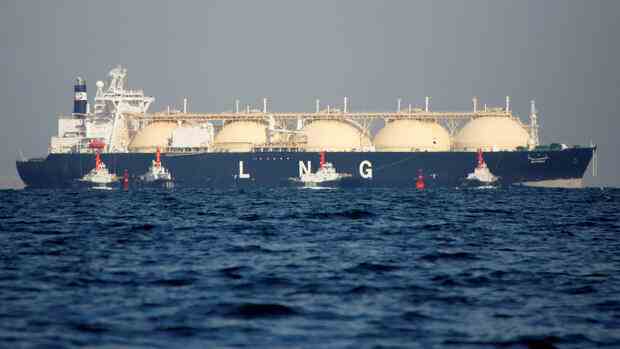Zurich The large swings in the prices of oil, gas, coal and industrial metals are creating historic gains for commodity traders. The industry generated its highest-ever gross revenue of $115 billion in 2022, up 59 percent from the previous year, which was also a record year for the industry. This is the result of a recent study by the management consultancy Oliver Wyman.
Before the outbreak of the corona pandemic and the associated large fluctuations in the commodity markets, the industry’s gross profit in 2019 was still 44 billion dollars.
Gross profit, also known as gross profit, measures the difference between sales and the cost of goods sold, i.e. purchase prices and delivery costs, but does not take into account other expenses such as personnel costs.
Trading in oil and gas drives profits
Traders benefited from the extreme fluctuations in the market last year, says Alexander Franke, partner and commodity trading expert at Oliver Wyman. The main driver of the record profits was trading in fossil fuels: Almost a third of the record gross profits in the industry came from trading in oil. Gas, electricity and emission certificates accounted for another third.
The sanctions against Russia because of the war of aggression against Ukraine “triggered a reorientation of supply connections on the oil market,” said Franke. Europe will no longer be an import market for Russian oil and gas, and the raw materials will be diverted to Asia, India and the Middle East. China has also demanded more raw materials again because of the economic opening after the strict corona policy last year.
Independent trading houses such as Glencore, Trafigura or Gunvor and the trading departments of banks and hedge funds have benefited particularly from these fluctuations. They specialize in exploiting short-term imbalances in supply and demand and benefit whether prices rise or fall. Last year they generated 60 percent of the gross income of the entire industry, in 2018 it was less than 50 percent.
In 2022, the large independent retailers benefited particularly after 2021, according to Franke, was still “a strong year for everyone”. The trading arms of the oil multinationals, on the other hand, still had to secure the supply of their own refineries, for example, and were therefore unable to take advantage of all the opportunities on the market. Some energy suppliers with associated trading business even had to make high losses in partial transactions.
Smaller traders at a disadvantage
In addition, because of the large fluctuations in the markets, the financing costs of the commodity traders also rose. “Smaller dealers who do not have the same access to financial resources could not take advantage of every deal,” explains Oliver Wyman expert Franke. Larger market participants like Glencore or Trafigura found it easier to organize enough money to finance the business. Above all, they use multi-billion credit lines from bank syndicates and bonds.
However, a wave of bankruptcies among small traders that was feared at the beginning of 2022 did not materialize, according to Franke: “The financial resilience of commodity trading is one of the positive observations of the past year.”
More: No all-clear for industry despite falling raw material prices
